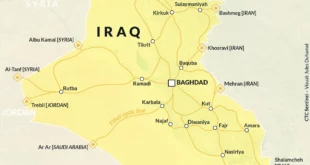GENEVA (AFP) — The number of people killed by cluster bombs in southern Lebanon since a ceasefire two weeks ago has climbed to 13, and clearance teams face a tough task as they try to lower the risk, experts said on Wednesday.
Chris Clark, head of the UN Mine Action Service in southern Lebanon, said that there had been a total of 59 confirmed casualties, including 13 deaths, caused by the explosives since the end of hostilities on August 14.
UN teams have so far located 390 separate Israeli strike sites in Lebanon where the munitions were used, Clark told a meeting of diplomats and weapons experts in Geneva.
About 2,000 of the potentially deadly bomblets, which litter the areas, have been destroyed, he added.
The United Nations has asked Israel to provide a list of sites targeted during its monthlong offensive in Lebanon, something which is crucial for the clean up.
“I’m not aware of how far that process has gone. But all I can say is that I haven’t got that information at the moment,” said Clark.
Cluster bombs deliver submunitions, or smaller bombs which are often no bigger than a torch battery. Many of the bomblets fail to detonate immediately on impact.
Israel and other countries which have used the weapons, notably the United States in Afghanistan, Iraq and Kosovo, often face criticism because the weapons can kill indiscriminately if they work.
 Unexploded bomblets, which are often scattered over a large area, can pose a deadly threat to civilians, especially children, for months and even years after a conflict.
Clark said that while it was “impossible” to give precise figures, half of the bomblets used may have failed to detonate.
Steve Goose, director of the arms control division of Human Rights Watch, said that Israel appeared to have stepped up use of cluster bombs in the final days of its offensive, leaving clearance teams with an uphill task.
“The situation is much more severe than what we encountered in Iraq, Afghanistan and Kosovo,” Goose said.
“As civilians return, they are encountering many of these duds,” he added. “It’s going to get much worse. It’s going to be a much bleaker picture.” Human Rights Watch is among a coalition of groups pressing for strict controls and the eventual ban on the use of cluster bombs.
Clark said that UN experts are also concerned by broader unexploded ordnance in Lebanon.
The Israeli military is believed to have fired around 2,000-3,000 rounds of heavier ammunition a day — not only cluster bombs but also artillery shells and more conventional bombs — in the early stages of its campaign to dislodge the Shiite Muslim Hizbollah fighters.
The figure rose to 5,000-6,000 rounds in the final days of the fighting.
Clark said an estimated 10 per cent of all munitions failed to explode.
“We’re simply bypassing them at the moment, because they are not the immediate problem,” he said.
In addition, southern Lebanon is littered with around 400,000 landmines, many of which were left by the Israeli military when it occupied a swathe of the country from 1985 to 2000.
Israeli military bulldozers used in the latest conflict to destroy Hizbollah positions on the border spreading previously marked minefields and hampering ongoing clearance efforts, said Clark.
 Eurasia Press & News
Eurasia Press & News


